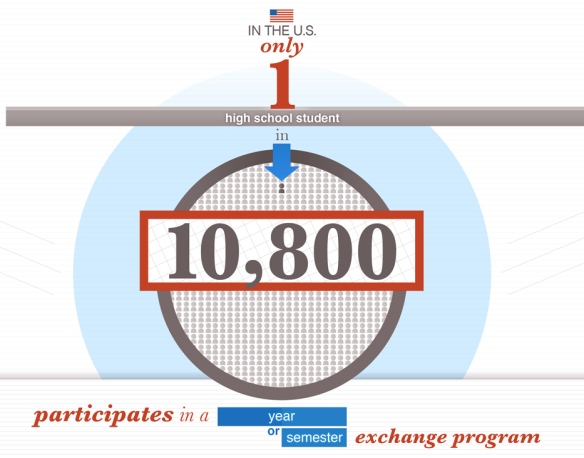“The real value of a real education,” American novelist David Foster Wallace asserts in his now-viral 2005 Kenyon College commencement speech about empathy, “has almost nothing to do with knowledge, and everything to do with simple awareness.” Most everyone who has studied abroad, especially those who have lived with host families, understands this concept acutely.
The positive, life-long impact of study abroad on young people is undeniable. Each year, however, less than 2,000 US high school students—roughly 1 in 10,000—travel abroad for a semester or year-long experience. Students younger than 15 years old, students with special needs, and students from geographically isolated and socio-economically challenged areas of the country have few opportunities to have the perception-altering experience that study abroad provides.
The efforts of the Connect All Schools consortium and like-minded programs, such as Flat Classroom, Edmodo, Twitter chats, Global Read Aloud Day, Skype in the Classroom, Microsoft’s Partners in Learning, Global Classroom Scrapbook Project, and the Intel Teach Program, have vastly increased the diversity and number of students gaining global awareness and empathy beyond what would be possible through study abroad alone. Still, only small fraction of U.S. K-12 students currently have access to some kind of international experience, whether physical or virtual.
“It is unimaginably hard to do this,” Wallace adds, “to stay conscious and alive in the adult world day in and day out.” It is difficult for educators in the day in and day out of teaching, testing, and trying out new technologies to commit their students to a collaboration with their peers around the globe. We must give teachers the space to do so. We need more than just 1 in 10,000 youth to be aware of what exists and what it feels like—even virtually, even for a short-time—to be outside our country’s borders. We need an empathetic, globally aware citizenry capable of working with their counterparts in other countries to meet the economic and geopolitical challenges of this century.
This is a real value of a globally-connected education.



